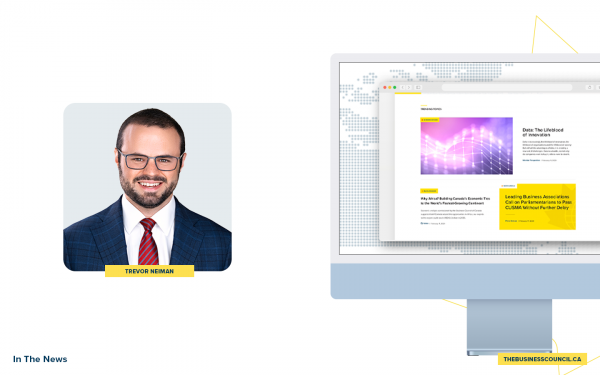Policy recommendations to help Canadians benefit from the data economy
Ottawa, March 3, 2020 – Under the guidance of former Industry Minister, The Honourable James Moore, and an advisory board of experts, the Business Council of Canada has released its latest report Data Driven: Canada’s economic opportunity.
As countries around the world are attempting to realize the opportunities and address the challenges of the data economy, Canada cannot afford to get it wrong. To put it in perspective, Statistics Canada estimates that Canadians invested as much as $40 billion during 2018 in data, databases and data science – greater than the total investment in industrial machinery, transportation equipment, and research and development.
“The Canadian economy is facing serious headwinds, but we believe if Canada enacts the right policies to capture the job-creating benefits of the data economy,” said The Honourable James Moore. ”We can do something special to ensure that Canadians have unprecedented prosperity by being leaders in the data and digital economy, and that’s what this initiative is all about.”
This report is the culmination of more than two years of policy work and consultations with Business Council members, stakeholders and policymakers. It provides a response by industry leaders across the country and in all sectors to the Government of Canada’s request for input following the release of the Digital Charter in May 2019. Data Driven offers 24 practical recommendations that address three broad priorities:
- Protecting Canadians
- Supporting a competitive marketplace
- Building data infrastructure
“Canada will not reap the benefits of the data economy unless citizens have confidence that their privacy is protected and their personal information is not being misused,” said Goldy Hyder, President and Chief Executive Officer of the Business Council. “This report contributes to a made-in-Canada policy framework that helps to build a foundation of trust amongst businesses, governments, and, most importantly, Canadians.”
Latest Press Releases
Business Council of Canada welcomes Tracy Robinson as new Chair
January 15, 2025
Media contact:
Howard Fremeth
Director of Communications
Business Council of Canada
613-854-5336
Howard.Fremeth@thebusinesscouncil.ca








